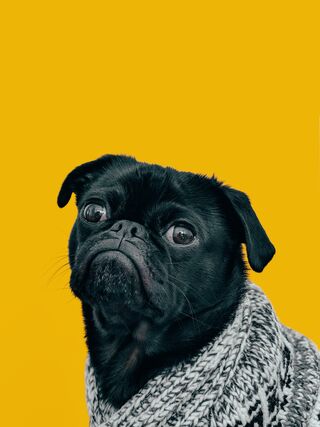Behavioral Economics
How to Change the "Color" of COVID
For your own sake, color it anything but black.
Posted September 13, 2021 Reviewed by Devon Frye
Key points
- It's smart to protect yourself against COVID.
- But choosing to self-protect doesn't mean you don't have to let a negative situation bring you down mentally.
- We cannot choose the times we live in, but we can choose how we react to them.

When COVID started, far away and with no American casualties, the U.S., for the most part, ignored it altogether. For a long time we collectively treated COVID as non-existent, seeing right through it (and condemning the science around it as dubious). Ultimately, we could no longer ignore it, and went into lockdowns, bringing life to a halt and painting reality a thick, opaque black.
Then came the vaccinations. We thought and hoped they would render COVID transparent again, allowing us to go back to normal. The old normal, devoid of masking, hand sanitizing, social distancing, or even that second of hesitation prior to hugging. And they almost did.
But, once the Delta variant emerged, more contagious, resistant to protections, and carrying the potential to cause more severe disease than other variants, as the Centers for Disease Control report, and as vaccination rates lag behind goals, with only 54.2 percent of the US population fully vaccinated, it is becoming clear that normal-as-we-knew-it isn’t coming back any time soon.
The new normal is upon us.
And that’s OK. Really. Rather than sinking into despair, I’m proposing a nuanced vision of this weird and ever-changing new normal. The strategies for doing so involve carefully choosing our reference points, reducing risks, and deciding that grey is beautiful.
Behavioral economics offers some solace. Defined by Nobel laureate Daniel Kahneman, and Amos Tversky, their Prospect Theory says we determine the value of things according to the reference point we choose and what we are comparing to. Compare to the old normal, and you’ll be moping around all day. Compare to lockdown gloom, and you’ll be sort of merry.
People who deal with chronic illness are all too familiar with this idea, at least the happier ones among them are. I recently met a patient suffering from a progressive degenerative disease, who smiled and told me he was so lucky for not having a worse diagnosis. The bleak reference point, like a darkly painted corridor, brightened the room he was in by way of contrast.
You might fear that a rosy-colored reference point would obscure the imminent uncertainty and risks associated with COVID. It shouldn’t. I am not forgetting these for a moment, and neither should you. I have, however, been studying medical decision-making for almost 20 years now, and what I’ve learned is that health and safety are all about mitigating, but never fully eradicating, risk and uncertainty. These are part of life, and we can choose how to manage them or let them manage us.
We are already managing risk and uncertainty with a nuanced approach in many domains without even noticing. Take transportation, for example. Car crashes kill 38,000 people in America every year. But Americans are still driving to visit their aunts in rural Pennsylvania, stopping by the King of Prussia Mall on the way. They do mitigate their risk: choosing the safest car, following the speed limit, not driving under the influence, and of course, buckling up. And they ignore the small chance that a drunk truck driver would crash into them, or they would never get in the car.
COVID poses new risks, and new ways of mitigating them: vaccinating, masking, leaving the windows open or sitting outside, touching elbows rather than hugging, and, at the mall, sanitizing your hands, and avoiding touching your face. If the mall seems crowded, consider whether it’s really the best time to go in. The only way to completely avoid risk is to self-isolate at home. Except, if you only focus on COVID risks, as we did in the dark days of lockdown, you are subjecting yourself to risks of anxiety and depression, drinking, and drug abuse, just to name a few. Not to mention neglecting your family duties and missing out on great bargains. Nuances are the name of the game.
Our differences also show in how we view the new normal, with the restrictions and uncertainty it carries, along with the greater caution that is being advocated. I suggest we take guidance from paint companies: rather than seeing the world in black and white (replacing transparent with white here for the sake of the metaphor, as transparent doesn’t come in a jar), they offer a rich catalog of hues, giving each of them a poetic description, and teasing them apart, rather than treating all of them as, for example, merely grey. So should we. Farrow & Ball, the iconic paint company, offer us Tar—a soft off-black, Stoke, a true, effortless grey, to bring strength, structure, and clarity to any palette, or a Weathered grey neutral that, in keeping with these somber times, is a little deeper and bluer than Shaded White.
Find the right shade of grey to tint reality with, but please do not color it all white, or pitch black.
I hope to see a future be as bright as a sunny Farrow & Ball Yellowcake. I too hope to be 50 shades freed.


